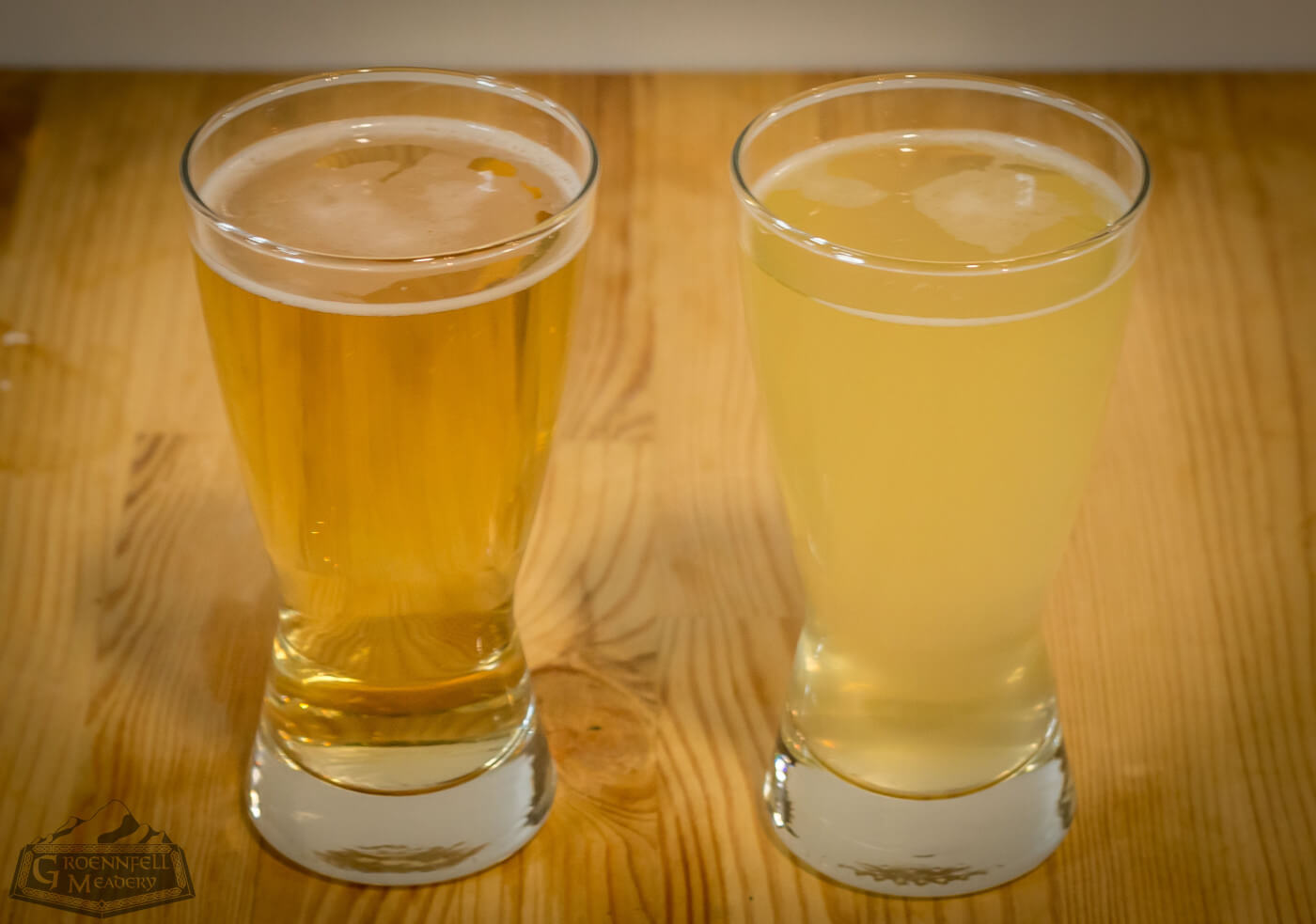When learning to brew mead at home, one of the steps that almost every recipe contains is that after fermentation completes you need to rack mead to secondary. In this article, we'll explore what that means, why you might want to do it, and whether or not it's really necessary.
What is "racking mead?"
Racking is the process of moving an alcoholic beverage from one vessel to another through the force of gravity, usually using a siphon known as a racking cane on the homebrew scale. On the commercial scale, we use pumps or head pressure to transfer our beverages from one tank to another. (Which usually works well.)
Why is it called "racking?" Although we now usually siphon our beverages from one vessel to another to prevent oxidation and to allow for greater control, historically beverages could be moved simply by pouring them through a tap into a barrel or other container.
The "rack" in this case seems to have referred to the rack system that was used for holding barrels in historical brewing operations.
Because of this, racking refers only to the process of moving the beverage from one bulk tank to another. You don't "rack" the mead into cans, only into a brite tank or a barrel. Does that mean you rack the mead into a keg? Good question. The internet seems divided on this one. We use the fairly reasonable linguistic trick of verbing the vessel around here. Want mead in cans? That's canning. Want mead in bottles? That's bottling. Want mead in kegs? That's kegging.
Why would you want to rack mead to secondary?
The term "secondary" in this case simply means a bulk storage vessel other than the one you used for your primary fermentation. In many cases, it will be more precisely sized to fit the total volume of the brew.
If you fermented six gallons of mead in a 7.8 gallon bucket, you would rack your mead into a carboy that was six gallons leaving behind a small amount of trub at the bottom of the primary fermenter.
There are a few key reasons you might want to rack to secondary:
- It gets the mead off of the yeast (aka trub or lees).[1]
- It reduces the potential contact with air by appropriately sizing the secondary vessel.
- Your secondary vessel usually has lower air permeability as well.
- Racking can aid in clarification, especially when used in conjunction with finings.

So, is racking mead to secondary necessary?
Absolutely not. There is no situation in which you need to rack your mead to secondary. There are, however, a few situations where it might be useful. As usual, it comes down to a question of what your goals are!
Higher alcohol content meads, like those in our Ancient Collection, need a longer aging time. Letting them sit on the yeast for months can lead to off flavors. In the commercial world, we remove the yeast from the bottom of the tank, which is why we have conical fermenters. As a homebrewer, you would move the mead to a new vessel.
For people who care about clarity in their mead (we don't), fining in the primary, then racking off the trub into secondary can make a huge difference for clarity in the final product.

Then again, you can definitely take hazy a little too far.
When is better not to rack mead to secondary?
Sometimes racking is unnecessary, like when you're brewing a craft mead. In this case, the mead ferments very quickly and the haziness is desirable. Moving the mead to secondary simply introduces one more stage of the process where you can pick up wild bacteria or some other infection.
Racking craft mead also, ironically, introduces more oxygen than if it were just packaged right out of the primary fermenter, even though racking to secondary reduces the oxygen exposure for meads that are being stored for longer.
There's a dispute about whether aging in bulk has a different effect from aging in bottles. The data is unclear on this one, so we won't make a definitive statement.[2]
The other reason to forgo racking is simply that it creates more equipment to clean, and who wants that hassle?
Hopefully, that helps! If you're a homebrewer, go ahead and pick a recipe from our open source recipe page and try and side-by-side! Maybe you'll find advantages (or disadvantages) that we missed!
[1] Technically the lees are component of trub, but in meadmaking the lees represent the vast majority of the trub, so the terms are used interchangeably. If you're brewing beer, you might want to make a further distinction. Or, alternatively, you might not give a hoot.
[2] Or, alternatively, "The data are unclear" if you're the kind of person who likes to get into fist fights with other data scientists.




